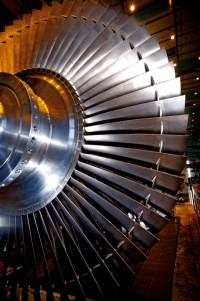French engineering company Alstom and China's Dongfang Electric Company (DEC) have signed a cooperation agreement on the supply of turbine and generator packages for future Chinese AP1000 projects.
 |
| Nuclear steam turbine rotor (Image: Alstom) |
Under the agreement, turbine and generator packages related to future AP1000 projects supplied by DEC will be based on Alstom's Arabelle technology. Alstom describes the agreement as strategically important for both companies.
China resumed nuclear power plant construction in 2012 after a hiatus following the Fukushima accident of March 2011, and Westinghouse's AP1000 design is the mainstay of the country's future construction plans with some 38 units at various stages of planning and development - four currently in advanced stages of construction at Sanmen and Haiyang. Alstom boasts over 20 years' involvement in China's nuclear power market, supplying over half of all the turbine and generator packages in the country in collaboration with DEC, although turbine rotors for the Sanmen and Haiyang AP1000 units were supplied by Mitsubishi Heavy Industries of Japan.
The agreement was signed by Alstom chairman Patrick Kron and DEC chairman Wang Ji at a ceremony in Chengdu. The first contract under the new agreement is expected to be signed "shortly", Alstom said.
The Alstom-DEC deal also marks the first introduction of Alstom's LP69 long last-stage blade module in China. Last-stage blades are part of the low pressure module in a steam turbine generator which converts heat energy from steam into electricity in a nuclear power plant, with longer blades contributing to increased power output. Alstom's 69 inch (175.3 cm) LP69 blade lays claim to being the world's longest last-stage blade in commercial operation in nuclear power plants, although the company is also marketing a 75 inch (190.5 cm) last-stage blade, the LP75.
Researched and written
by World Nuclear News




_18570.jpg)
_18938.jpg)
_33584.jpg)
_82983.jpg)





